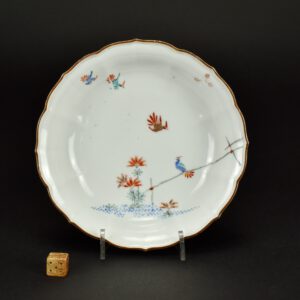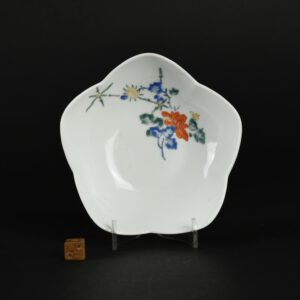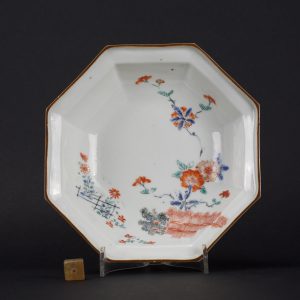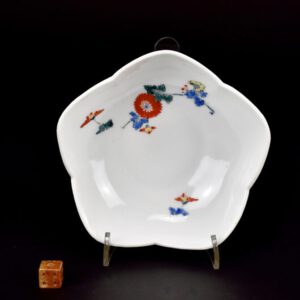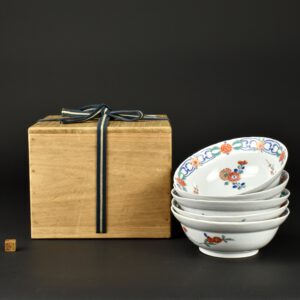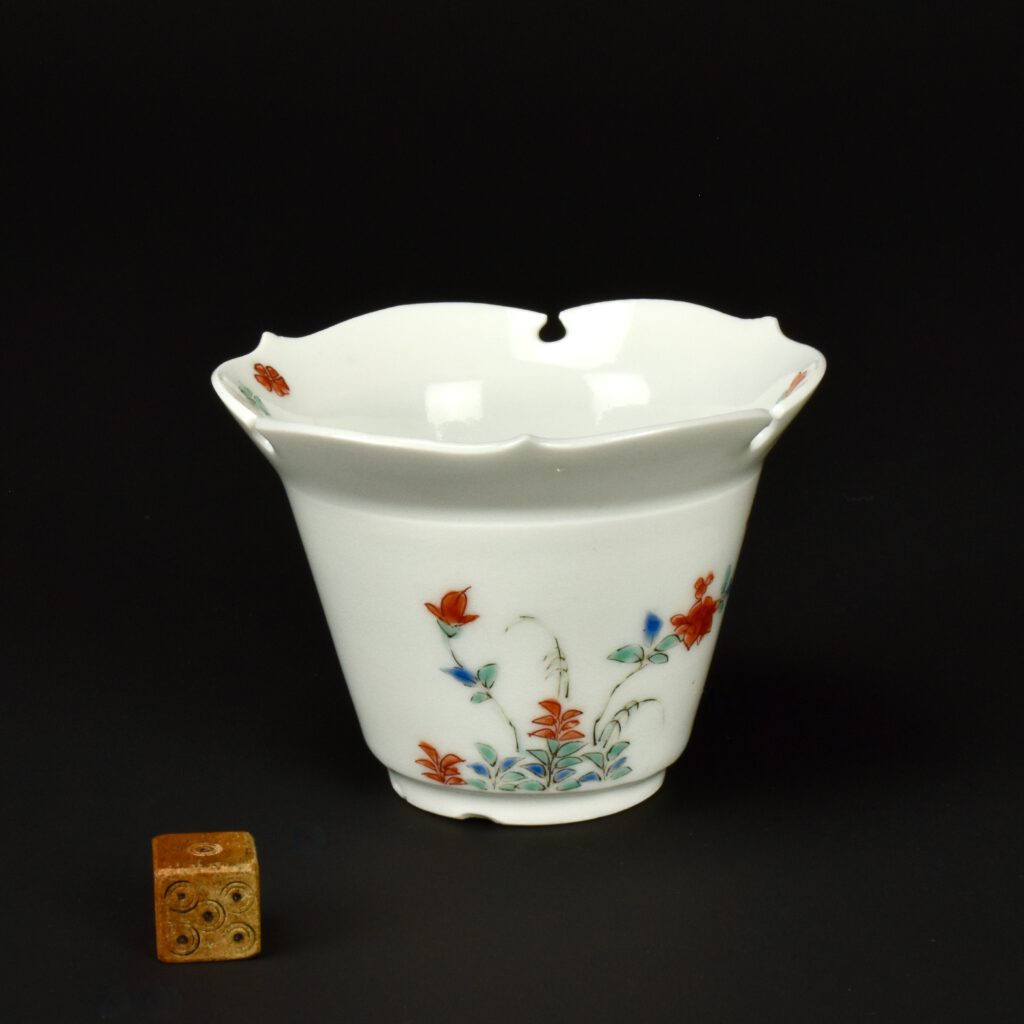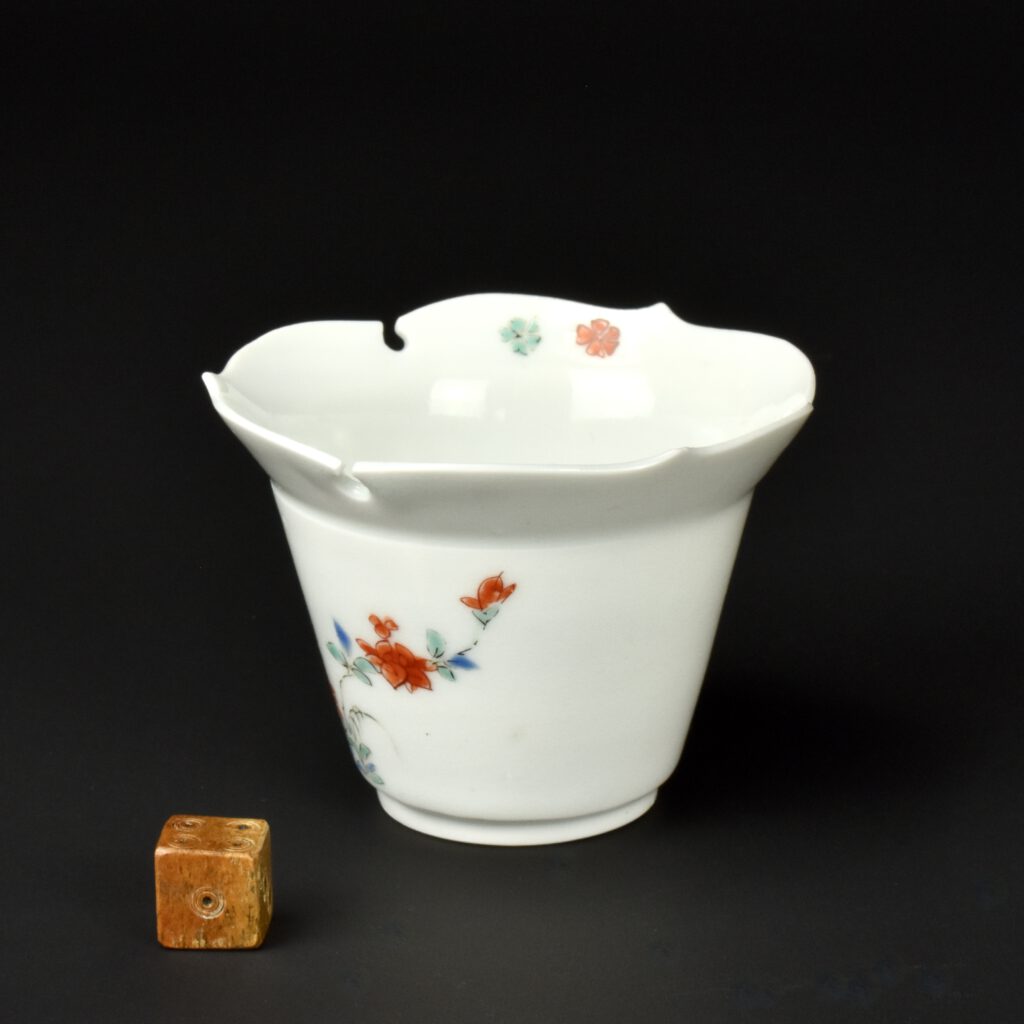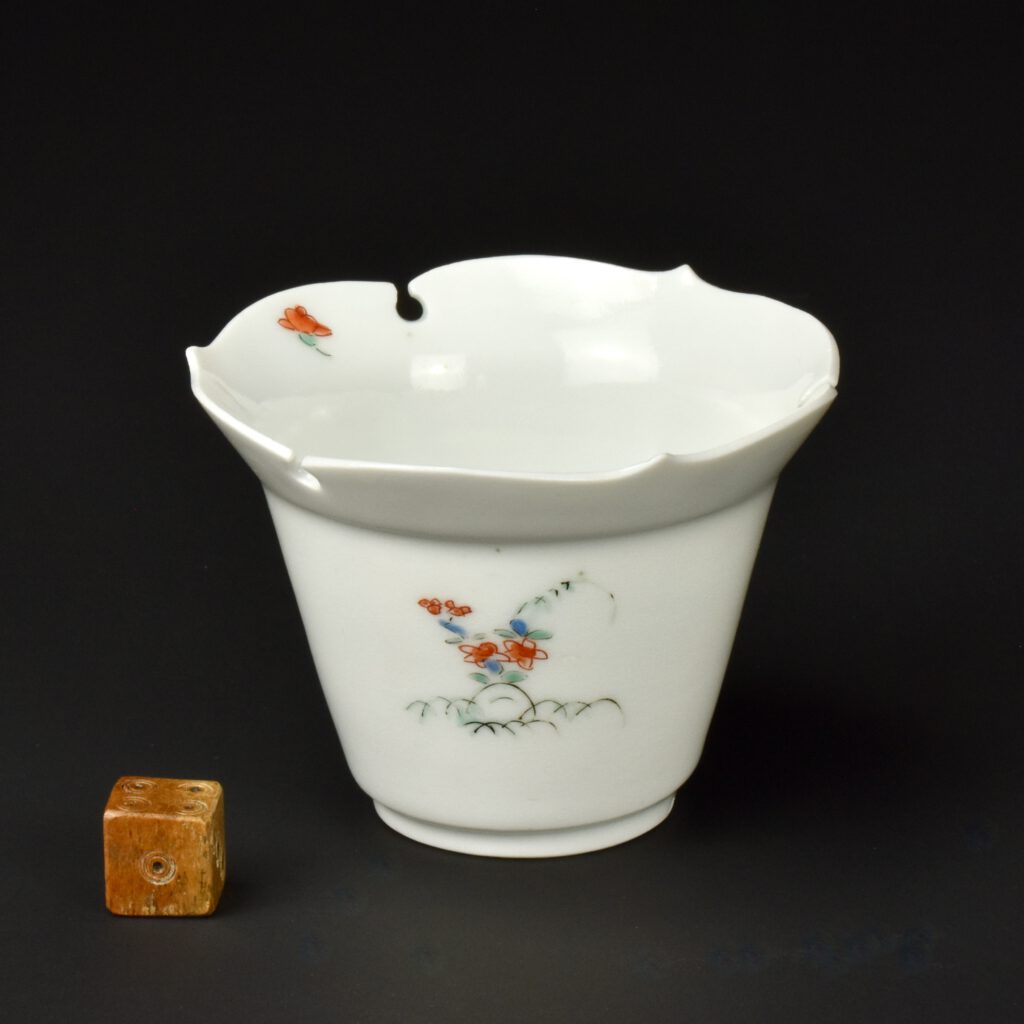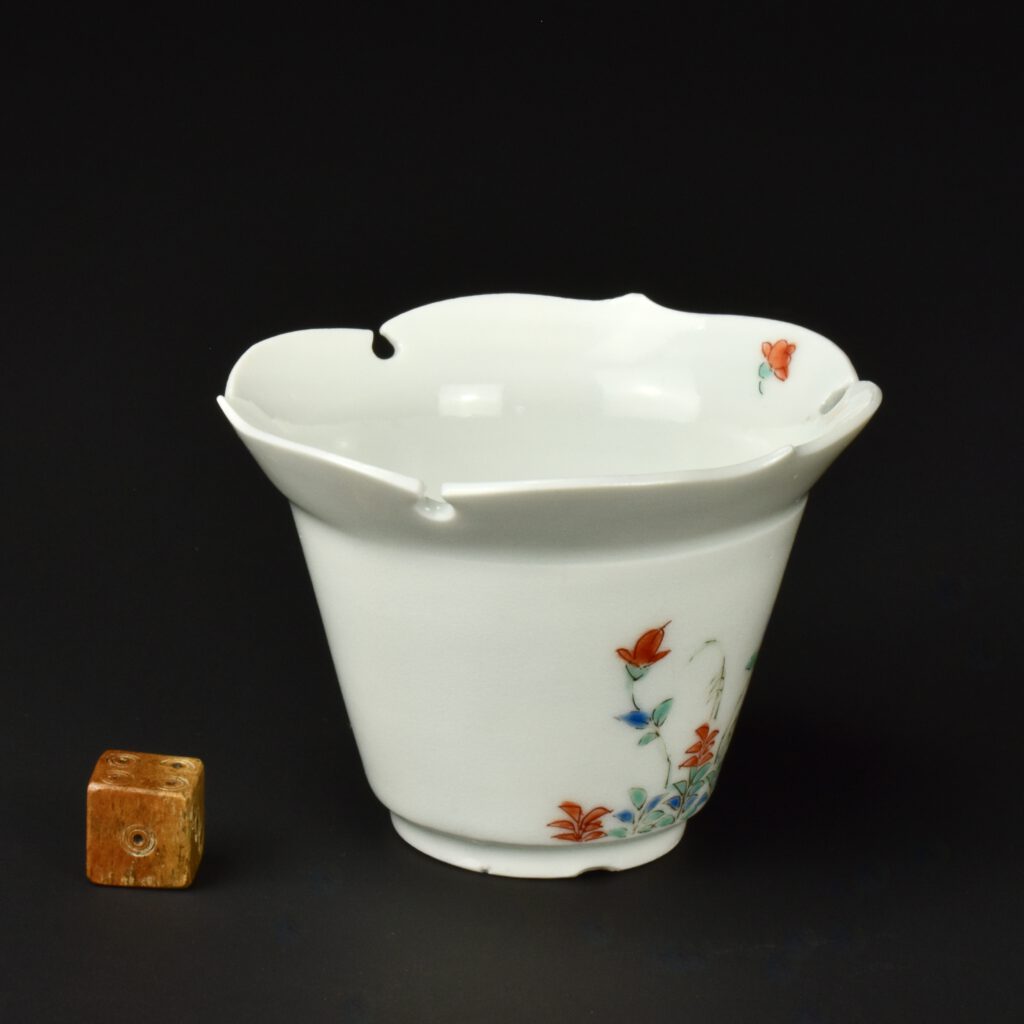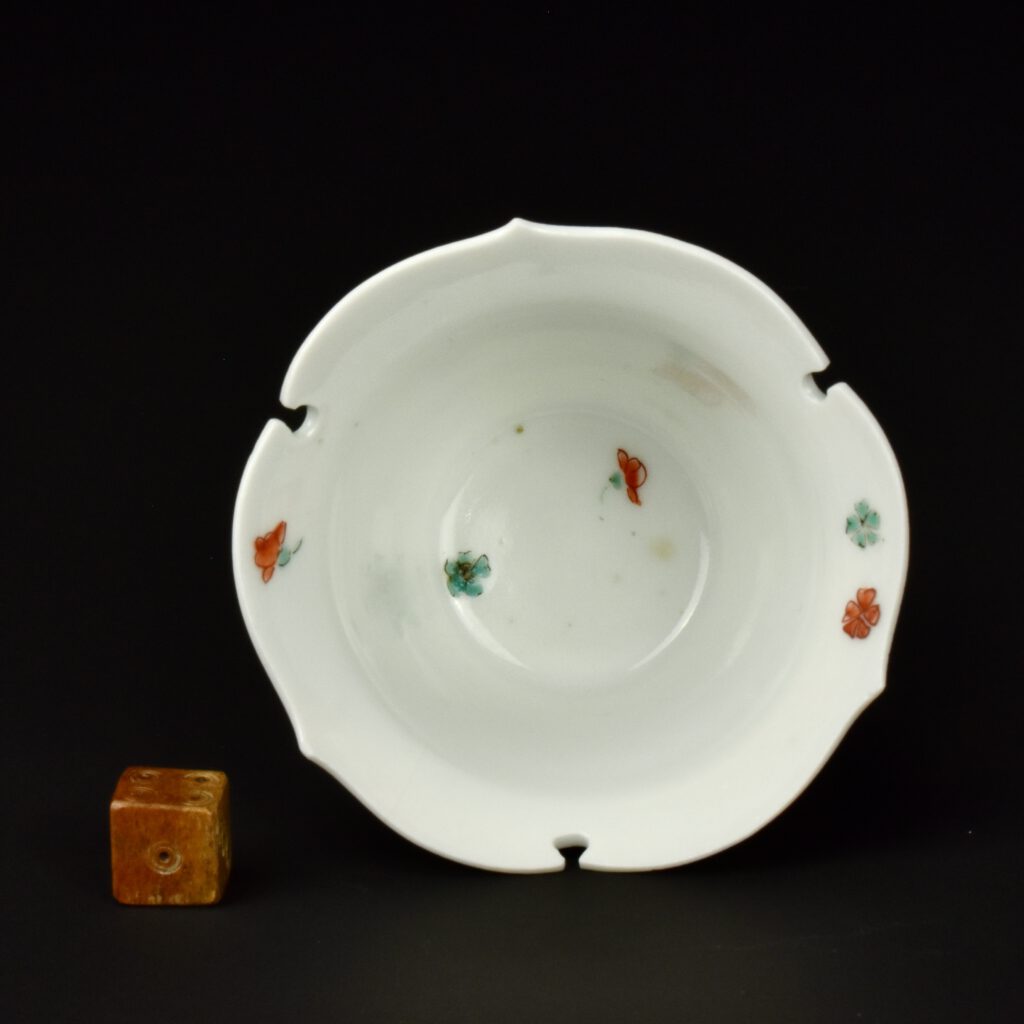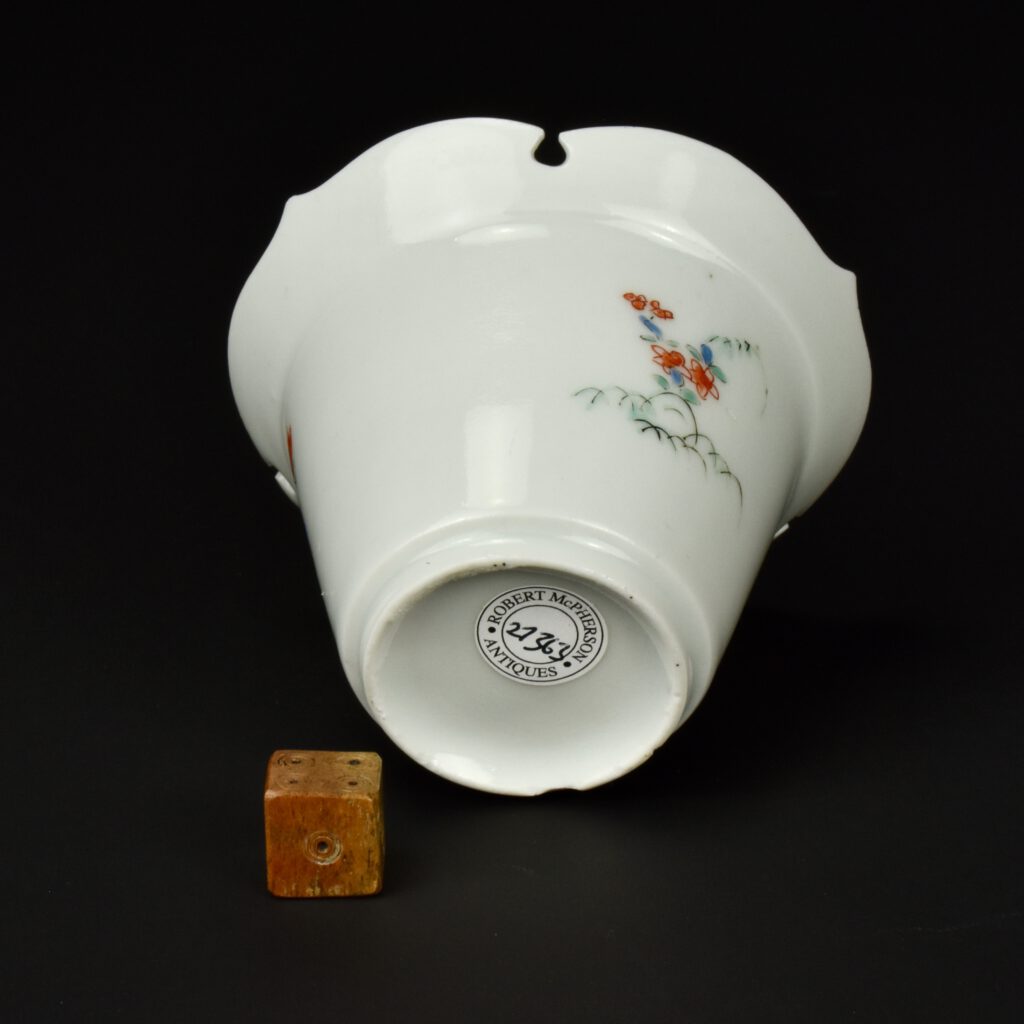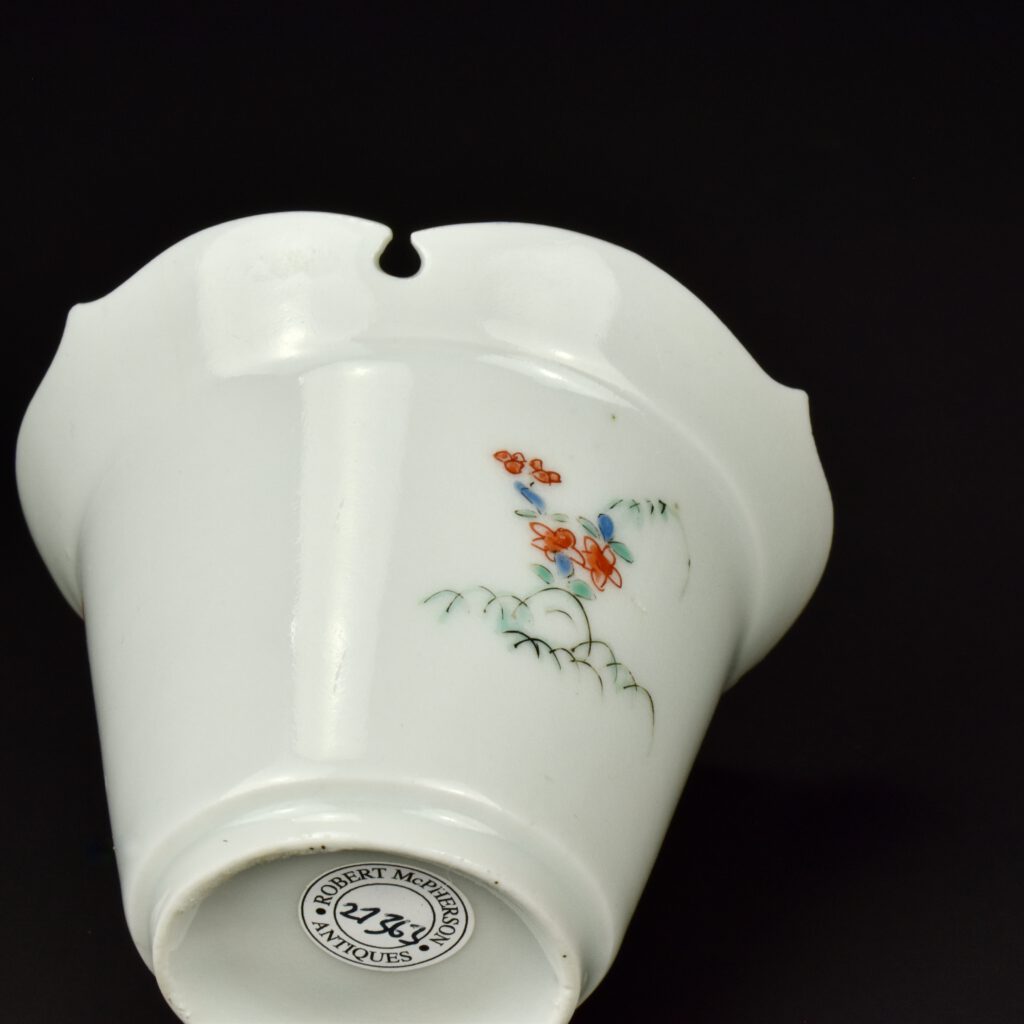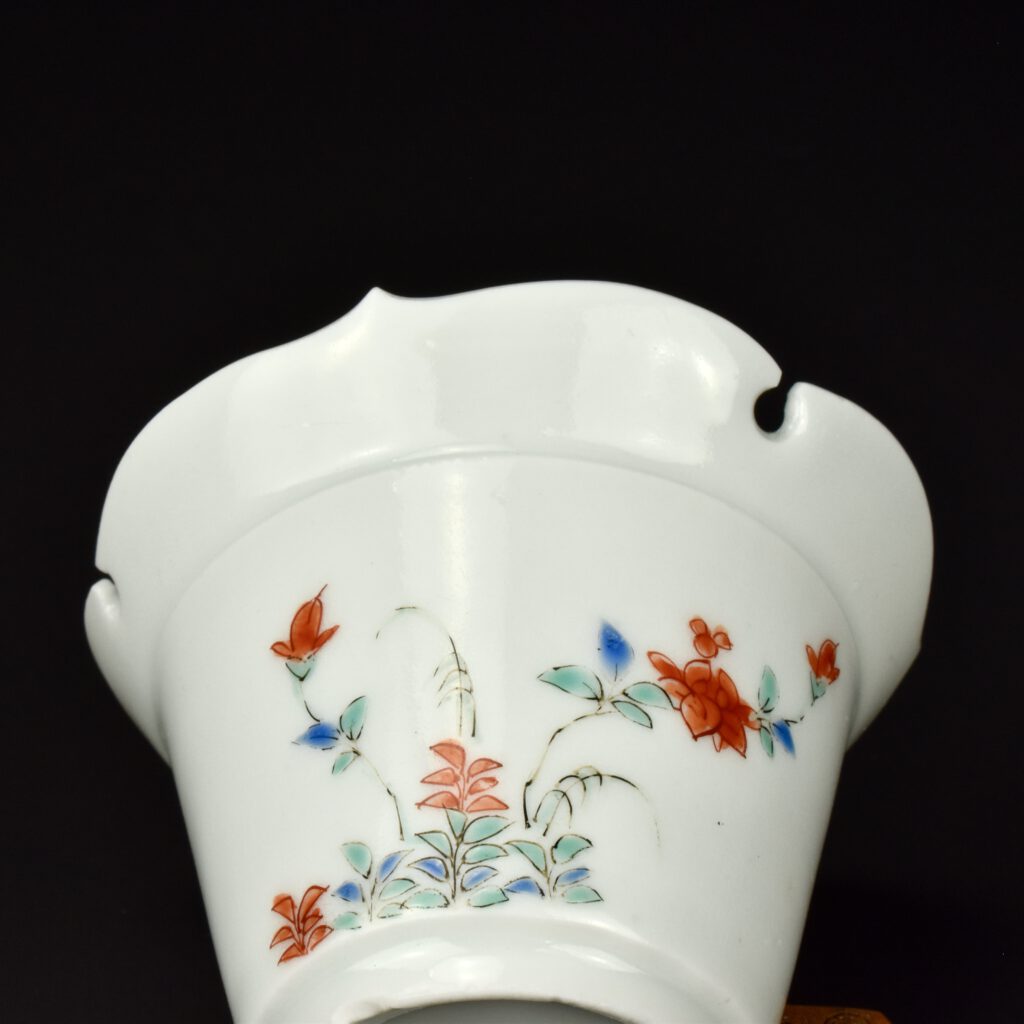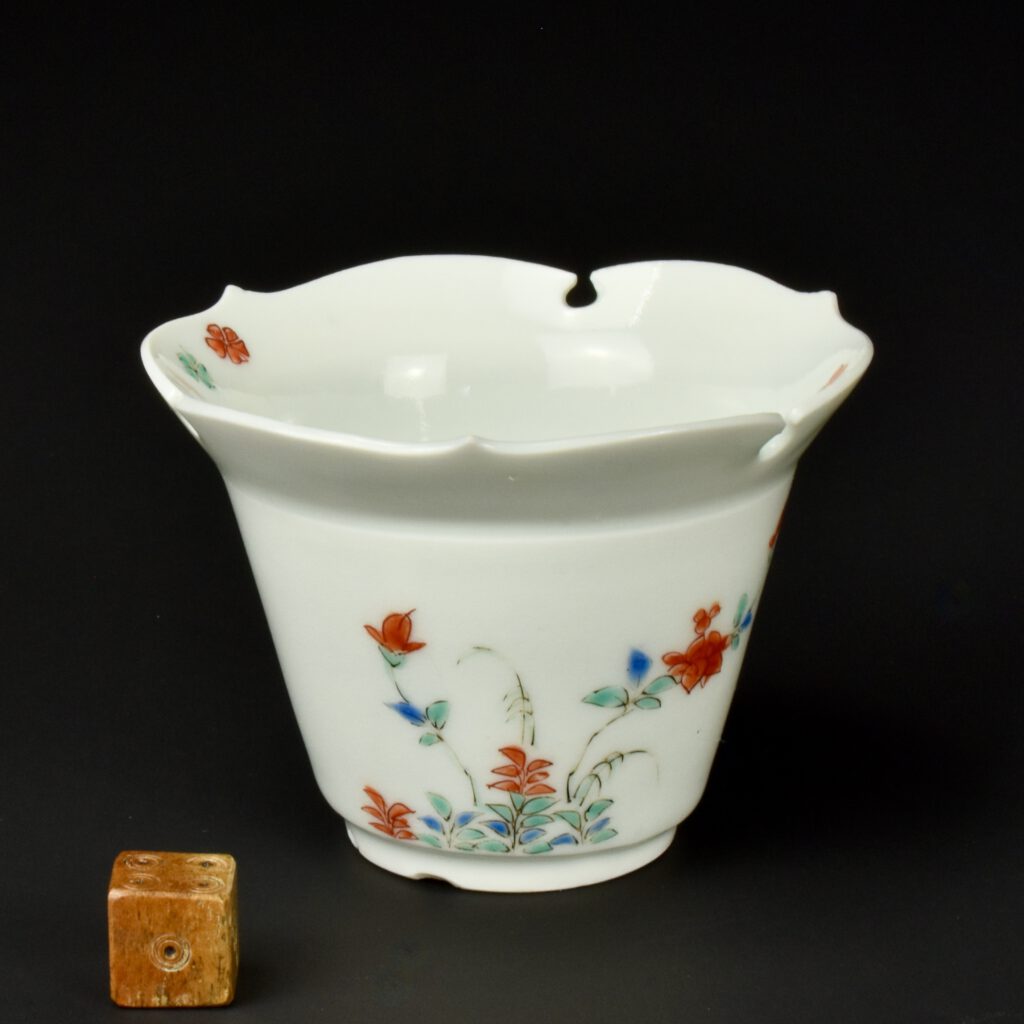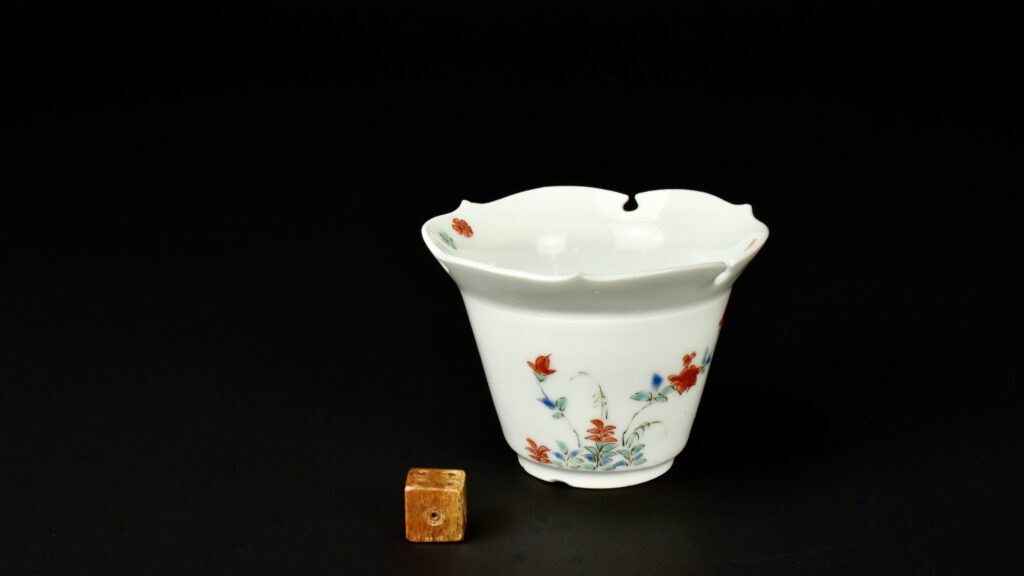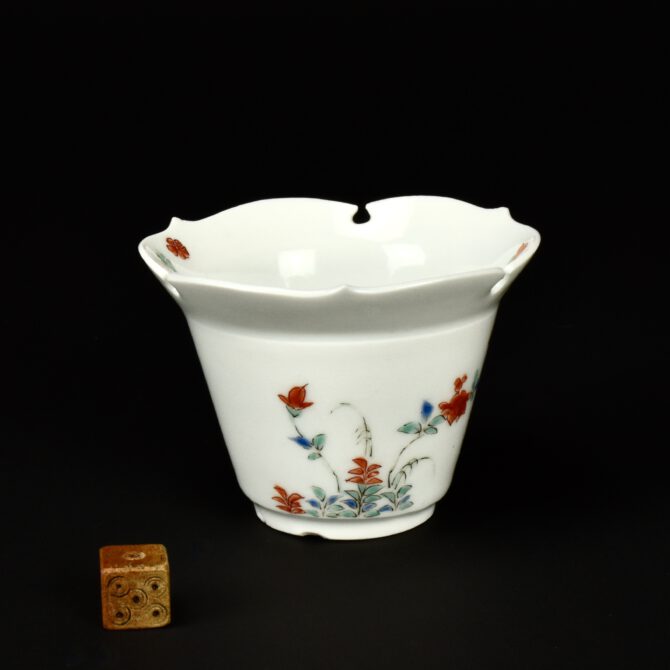
A Small 17th Century Japanese Kakiemon Porcelain Bowl
A Small 17th Century Japanese Kakiemon Porcelain Bowl, Kakiemon Kilns c.1670 – 1690. These small Kakiemon conical shaped bowl is made with the Nigoshide (milky white) body that is typical of the period of around 1670 to 1690. The porcelain is of very high quality, and the potting is very good. The flare rim is barbed and has notches, resembling a snow wheel. This is a stylised snowflake, sometimes referred to as a snow wheel. The design is of course fanciful, as the true form of a snowflake had yet to be determined. The over-glaze asymmetrical enamel decoration is typical of Kakiemon porcelain from the late 17th century. It consists of flowering plants and grasses. The interior is of scattered flower-heads, some show flat, others on their side.
See Below For More Photographs and Information.
SOLD
- Condition
- There is a fine long crack, a shallow chip to the foot, a minute chip to the foot. Very minor wear.
- Size
- Height 5.5 cm (2.1 inches). Diameter
- Provenance
- N/A
- Stock number
- 27363
Information
Kakiemon Porcelain
While there is much debate about what was actually made at the Kakiemon kilns, and was made at Arita, it seems clear that the Nigoshide body was exclusively used at Kakiemon. There has been allot of Japanese research undertaken at the Kakiemon kilns, and fragments of porcelain as well as moulds have been recovered from the kiln sites, unfortunately I have only found this information in Japanese books (in Japanese). Nigoshide refers to a fine milky-white porcelain body that glows with a warm tint, in Japan it is said to be reminiscent of rice-water. While white porcelain usually sports a blue tint, Nigoshide porcelain has a soft milky-white appearance. Nigoshide was invented in the 1670s as the perfect porcelain body for complimenting the brilliant polychrome overglaze enamel colours created at Kakiemon. It is notable that the Kakiemon enamel decorated pieces with underglaze blue do not use the Nigoshide body, yet fragments of this type have been recovered from the Kakiemon kiln sits. The main period of production of Kakiemon Nigoshide ware was from about 1670 to 1690. Due to lack of the right materials and economic cutbacks, Nigoshide porcelain went out of production by the mid-18th century, however there was a notable decline in production from around 1690.
Kakiemon decoration is usually of high quality, often delicate and with well-balanced asymmetric designs. The designs were normally quite sparse emphasizing the. Kakiemon porcelain was decorated with a great variety of imaginative designs which include elements such as the `banded hedge`, `flying squirrel`, and the `Quail and Millet` design in the West. The `Three Friends of Winter` were also a very popular group of designs, other subject taken from nature include flowers (especially the chrysanthemum, the national flower of Japan) as well as birds and rock-work. Figural subjects such as the so-called `Hob in the Well` were also popular. This design illustrates a Chinese folk tale where a sage saves his friend who has fallen into a large fish-bowl by throwing stones at it, breaking open the pot. Banded-Hedges were a formal device within Japanese traditional gardens, they were often incorporated in designs, includes `The Three Friends of Winter` (Pine, Bamboo and Prunus). These three plants signify perseverance, as neither the pine nor the bamboo shed their leaves in winter and the plumb (Prunus) flowers at the very end of the winter, heralding the arrival of spring.
Kakiemon Bowls
Robert McPherson Antiques Sold Archive
